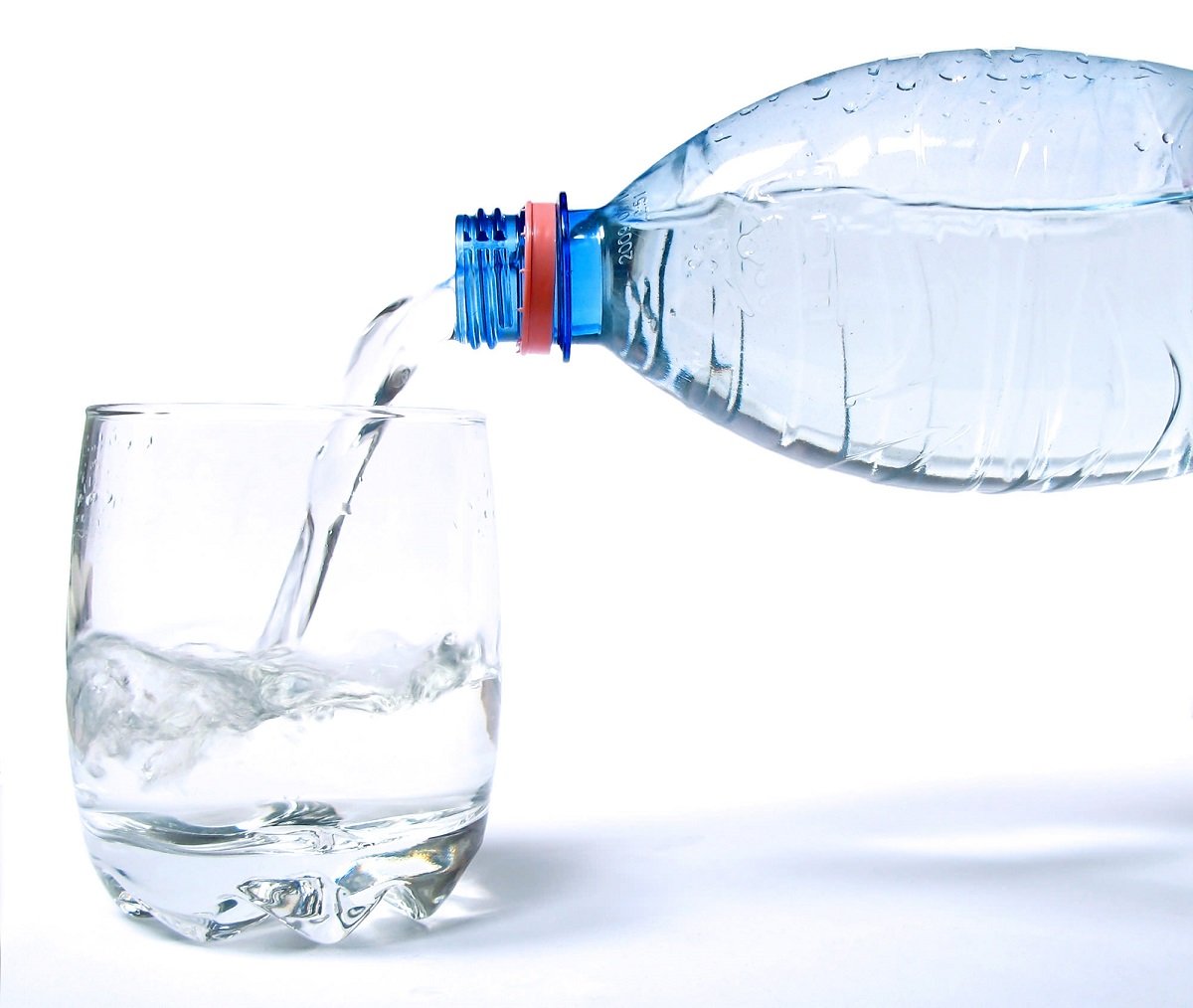Can summer high temperatures cause taste problems in bottled mineral water?

Bottled mineral water is the most consumed beverage during the summer months. The most common packaging for water is polyethylene terephthalate (PET) bottles. Such polymer is widely used because of its excellent properties of transparency, low weight, strength and good oxygen, water vapour and carbon dioxide barrier properties.
In summer, high temperatures and bad storing conditions such as, long times of ultraviolet radiation exposure, may produce a degradation of the polymer, thus resulting in thermo-oxidative processes and generating compounds that have not been intentionally added to the polymer and are known as non-intentionally added substances (NIAS).
As it is known, bottled water is odourless, colourless and tasteless, even though not absolutely. It is known that the characteristic taste of some water brands depends on the chemical composition of the salts they contain. However, when a consumer detects a strange taste or aroma that differs from that characteristic of water, one of the causes might be the packaging.
Such strange taste might have been caused by migration of any chemical compound from the plastic to the water. There are different chemical compounds that can be found in bottled water resulting from such migration, such as acetaldehyde, formaldehyde or antimony, among others.
Modification of mineral water by acetaldehyde
Among the compounds that can migrate to the bottled water, it has been found that acetaldehyde can change the organoleptic characteristics of water, thus producing a fruity taste, something like green-apple taste, or a plastic taste. This taste is not dangerous due to the low concentration, but it depends on the dose ingested.
Some researches mention that a trained sensory panel could recognize extremely low acetaldehyde concentration, between 10 and 20 µg l-1 in mineral water. This is due to the fact that a low concentration can produce taste modifications. Some studies point out that values of 10 µg l-1 of acetaldehyde content should not be exceeded, with the aim of guaranteeing the water quality.
According to the Regulation 10/2011, the specific migration limit for acetaldehyde is 6 mg/ kg-1 of food. However, since the sensory threshold is much more restrictive, bottles finding water with strange taste would comply with Regulation 10/2011 but would not with Regulation 1935/2004. The latter mentions in its clause 3 that materials should be enough inert not to modify the organoleptic characteristics of the foods they contain. Therefore, the sensory research on PET-bottled water is fundamental to guarantee the compliance with legislation and maintain the image of the brand before the consumer so that they will not find any different taste rather than the characteristic of the product.
Main factors that affect the appearance of acetaldehyde in mineral water
The migration of acetaldehyde from the package walls to the bottled mineral water depends on different factors, such as the following:
- Contact surface
- Material composition and concentration of acetaldehyde on the bottle walls
- High temperatures during the manufacturing process of bottles
- Whether bottles are returnable or non-returnable
- Storing conditions: high temperatures and sunlight contribute to the migration of acetaldehyde to water
- Water carbonation percentage
- Contact time between the material and the water
In relation to other factors affecting this process, such as high temperatures and sunlight, it is really common that during the summer months acetaldehyde’s migration accelerates from the bottle walls to the water due to its polar characteristic and its easy dissolution in water.
Measures for controlling acetaldehyde’s migration
Considering bottle manufacturing, there should be some control of the chemical quality of the raw materials and the technology used for obtaining bottles. It has also been seen that the use of scavengers shows a positive effect but can adversely affect the transparency and colour of the polymer, as well as increase the cost of the product. 2-aminobenzamide (No CAS 88-68-6; anthranilamide) is widely used as a scavenger agent during the production of preforms with the aim of reducing the concentration of acetaldehyde of the bottle walls.
Among these control measures in bottled mineral water, we can find:
- Performance of sensory analysis after the packaging time has expired.
- Traces of acetaldehyde can be found from the 6th month according to new technologies used.
- Recommended to perform analysis at the 6th month and the 12th month for quality control.
- Additional measures apart from the first ones.
- Control of temperature conditions during storing, especially during the summer months.